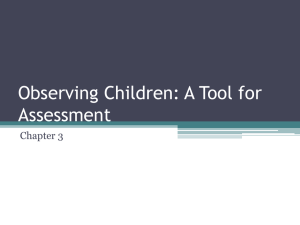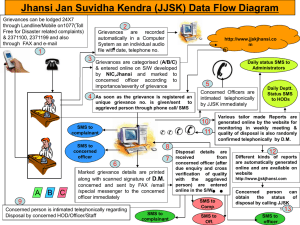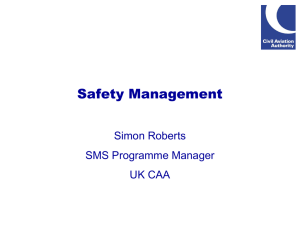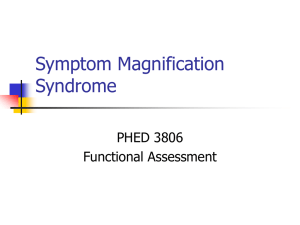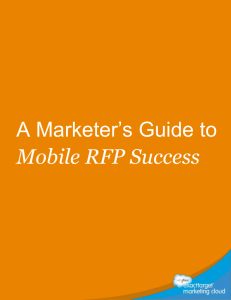Smith Magenis Syndrome
advertisement
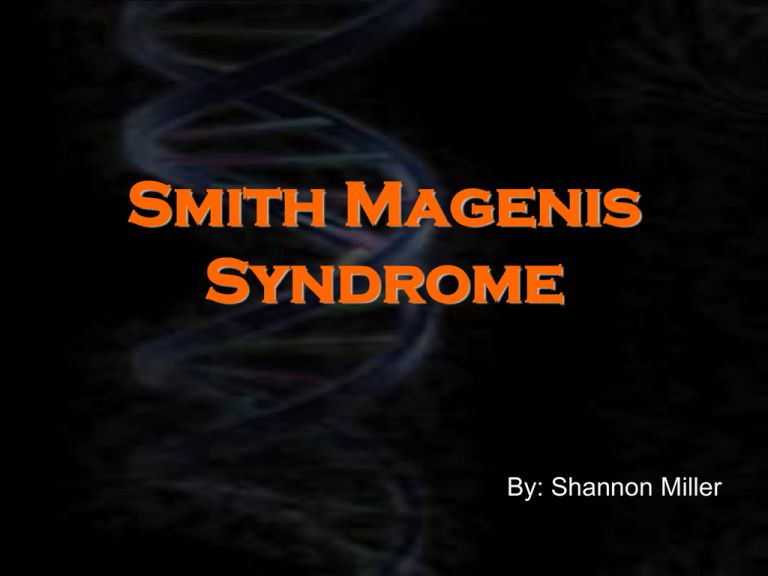
Smith Magenis Syndrome By: Shannon Miller What is SMS? • Smith-Magenis syndrome (or SMS) is a chromosomal disorder characterized by a recognizable pattern of physical, behavioral, and developmental features. • It is caused by a missing piece of genetic material from chromosome 17. SMS Info. • Incidence – It is estimated that SMS occurs in 1 out of 25,000 births. • Diagnosing – Cytogenetics labs perform blood tests called chromosome analysis and utilize a technique called FISH. • FISH is a technique or process which paints chromosomes or portions of chromosomes with fluorescent molecules. • Fact – SMS usually does not run in families – Not inherited by either parent Physical Characteristics • Facial Appearance – Flattened mid-face – Turned down mouth – Prominent jaw • Other Characteristics – – – – – – – – Low Muscle Tone Oral-sensory motor dysfunction Middle ear problems Hoarse voice Short fingers and toes Flat feet Distinct, broad-based gait (walking pattern) Decreased sensitivity to pain Developmental Features • Developmental Characteristics – – – – – – – – Developmental Delays Mental retardation (mild - moderate) Mouthing objects or hands that persists beyond early childhood Speech delay and articulation problems Sensory integration issues Teeth grinding Delayed toileting skills Sleep Disturbances • Frequent night time awakenings • Increased day time sleepiness • Early morning awake times Behavioral Characteristics • Self-injurious behaviors – – – – Head banging Hand biting Picking at skin, sores and nails pulling off finger Inserting foreign object into ears, nose or other body orifices. • Maladaptive Behaviors – – – – – – Hyperactivity Impulsivity Attention seeking (especially from adults) Easy excitability or distractibility Sudden mood shifts Explosive outbursts – Prolonged tantrums; and aggressive or destructive behavior Other Features • More Common Features 50%-75% (affected individuals) – – – – Hearing impairment Short stature (especially in early childhood) Scoliosis Eye problems • • • • Strabismus (an eye that turns in or out) Myopia (nearsightedness) Small cornea Iris anomalies • Less Common Features 25%-50% (affected individuals) – Congenital heart defects / murmurs – Lowered immune function – Seizures – Thyroid function abnormalities Social Characteristics • Thrives on interacting with adults. (Especially 1 on 1) • Loves meeting new people however struggles making friendships. • Easily agitated by others and stressful situations. • Negative Behaviors get in the way of forming long term friendships/relationships. • Anxiety about upcoming events or things going on around them can trigger explosive behaviors. Education • Attributes that negatively affect learning • Attention seeking • Aggression toward others • Tantrums • Self-injurious behavior • Poor impulse control • Negative reaction to changes in routine • Attention deficit disorder • Perseveration • Sleep Disturbance Education Cont. • Attributes that positively affect learning – – – – – – – – – – Engaging and enduring personality Appreciative of attention, excitable Responsive to structure and routine Motivated by a variety of reinforcers Eager to please Communicative Enjoys a variety of activities Fascination with electronics Well developed sense of humor Identifiable causes of tantrums and aggression Contraindicators • Things to Avoid – – – – – – – – Stressful Situations. Activities that are complicated or have many instructions. Change Quick instruction Contact Activities Bully’s Social put downs Injury to self Managing Behaviors • Prevention – – – – Learning the triggers Remain non-confrontational Positive feedback is a must Use pictures if needed to help avoid frustration • Redirection – Focus on anything other than what is upsetting them. – Must take place before behavior escalates – Using humor seems to be very affective • Physical Attention – Hugs – Sensory • Brushing • Warm baths • Spinning in an office chair Managing Behaviors Cont. • Switching Out • Visual Cues – Often times very visual learners. • Reasoning and Behavior Modification – Rewards for doing something or for good behavior • Important Note – Children with SMS, regardless of age or developmental level, are notoriously clever. They quickly learn how to manipulate others and “push our buttons.” Treatments • Treatments are linked to experimental findings. • The use of psychotropic medication may help to increase attention and/or decrease hyperactivity. •Common Medications •Melatonin •Trazadone •Risperdal •Depakote •Ambien • Other medications are sometimes used for behavior modification. Assistive Technology/Modifications • Assistive Technology •Modifications •Modify equipment to fit students needs. •Activities should be modified based on the ability of the student. •Lessons should be modified to avoid frustration and also to allow the student to be successful. – – – – Pictographs Glasses Hearing aids Wedges Activities • Students should participate in the mainstream class as much as possible as long as they are able to be successful. • They should receive Adapted Physical Education to work on basic fundamental skills. Resources • Prisms Website – http://www.smithmagenis.org • Genetics Home Reference – http://ghr.nlm.nih.gov • Disorder Zone Archives – http://www.specialchild.com/archives/dz-027.html



